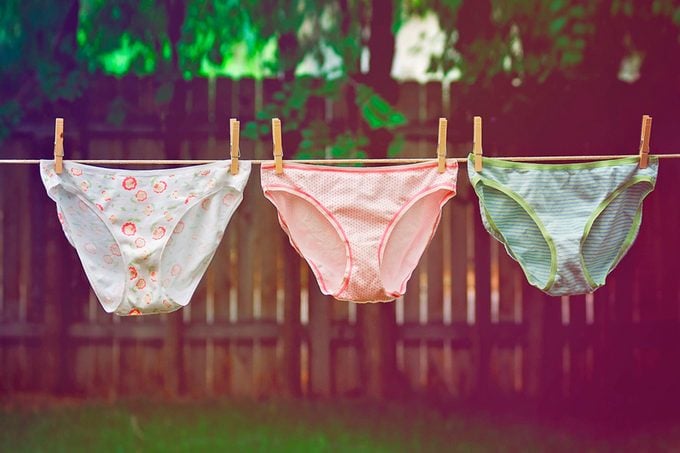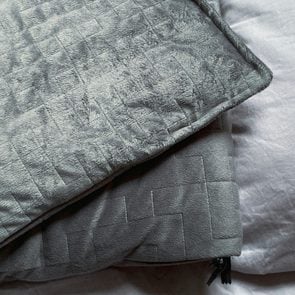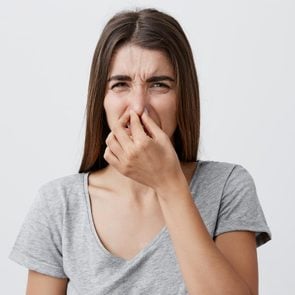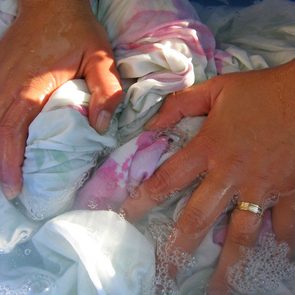I’m a Microbiologist—and This Is the Only Way to Clean Your Underwear
Updated: Jul. 26, 2024
Over the years, scientists have found that one tip can help make sure your underwear are really as clean as you want to believe they are.

Laundry might feel endless—but it’s always so satisfying to fold a load and tuck it away inside the drawer. Except, there’s something you probably don’t know about your clean clothes: it’s possible they’re actually not that clean. Over the years, scientists have found that the average pair of clean underwear still contains about 0.1 grams of feces. And, if that’s unappealing, consider one classic study in the Journal of Infection that was led by Charles Gerba, PhD, a microbiology professor at the University of Arizona. Dr. Gerba’s team found that a “clean” pair of underwear could hold up to 10 grams of that very stuff you wanted to wash out of it.
One tip, say microbiology experts like Dr. Gerba: if you aren’t already doing your laundry in hot water, it might be time to start. Cold water is “designed to get clothing clean, but not eliminate microorganisms,” Dr. Gerba says. Anything below a hot cycle of 140 degrees Fahrenheit won’t do much against bacteria.
The Most Breathable Women’s Underwear You Can Buy, According to Gynecologists
Or, say you try to avoid using hot water because it makes your clothes shrink or fade. Dr. Gerba suggests in that case, try using an activated oxygen bleach detergent like OxiClean or Clorox 2 can sanitize your clothes.
These two laundry tips don’t just affect your undies. Without hot water and bleach, bacteria from your underwear can spread to other clothes in the wash, too. Unloading that “clean” laundry into the dryer also gets bacteria on your hands, which means you could spread it to other fabrics or even up your risk of infection by spreading the bacteria to everything you touch.
So, says Dr. Gerba, one last tip? Keep your underwear separate from the rest of your laundry to avoid spreading the germs throughout your wardrobe, sheets, and other washables.
Here’s why you should never sit on your bed with your daytime clothes on
Even those best practices might not get rid of bacteria completely, though, because those germs don’t just disappear after your clothes have been in the laundry. Some of that bacteria—including E. coli—stick around in the machine after the cycle is over, says Dr. Gerba. Washing your underwear last will keep that away from your other loads, but you should clean the machine itself by running an empty cycle after every underwear load. “Give the washing machine a mouthwash by running bleach through it and killing bacteria left,” he says. Read How to Clean Your Washing Machine from our team at Reader’s Digest
Get The Healthy @Reader’s Digest newsletter for wellness tips you need each day. Live better—keep reading:
- Nate Berkus Just Shared His #1 Best Design Secret for a Better Night’s Sleep
- Eating This Fruit Once a Day Can Decrease Bad Cholesterol, Says New Study
- The 5 Best Hormone-Safe Sunscreens, Recommended by Doctors
- Depression Is 9 Times More Likely for People with This Chronic Disease, Says New Study
- 4 Wise Ways to Manage Travel Tummy Troubles, from Wellness Pros



















